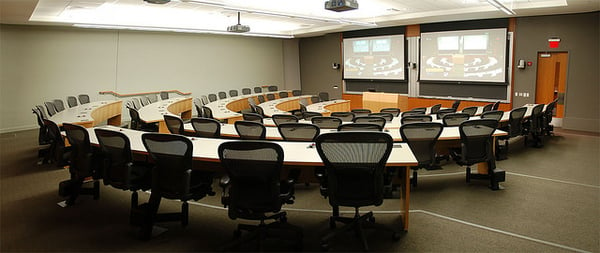Published on
Teaching Adults in the Workplace (Part 2)

This is the second in a series of three articles by Loradonna Botter exploring five major differences between teaching adults in the workplace and in a college setting.
In my first article, I outlined six major differences between teaching adults in the workplace and in a college setting. They are:
- The attendance at class is usually better in college
- Sessions at work usually involve more discussion and experiential learning
- The classrooms are always better equipped in college
- Evaluations are immediate after the workplace training; therefore, the PDCA cycle can be easily implemented for improvement purposes
- The transfer of knowledge is easier to assess in the college setting
I tackled the first difference in my first article. In this article, I will look at numbers two and three.
Sessions at work usually involve more discussion and experiential learning
As stated earlier, many of the classrooms are more conducive to conducting activities which include round table discussions and group activities. Adult learners tend to be more appreciative of sessions that allow for socialization, characterized by dialogue, brainstorming, and problem solving. The more diverse the group, the more thought provoking the discussion because different perspectives are usually the pre-emptive factors that lead to people discussing what they do and why an idea would or would not work in a particular setting. Experiential activities have been proven to enhance the learning experience of adult learners and are most beneficial when you are trying to assess the transfer of knowledge in a limited timeframe. For the college student, he or she wants the autonomy to discover his or preferred learning style. It is for this reason that many college classes offer a variety of learning mediums including tests, group presentations, essay writing, and visual mediums. During college sessions, the main objective is to impart knowledge and information. It is the learner’s responsibility to reflect on the information shared and prepare questions to help clarify anything that is unclear. When the duration of a course is 14 weeks, it is much easier to establish a relationship with participants and provide each learner with at least one preferred learning medium.
Classrooms are always better equipped in college
In the college setting, the rooms are equipped with projectors, white boards, laptop hook-ups, and a Wi-Fi environment for easy note taking on individual computers. In the workplace, you are usually converting a meeting room into a classroom. The room can sometimes be tight and you need to bring a projector and a laptop to run your session. A lecture format works well in a college or university setting and PowerPoint is easy to work with as a facilitator. With the use of Lectora and Acrobat, PowerPoint is interactive and fun for the students. In the work environment the rooms are not the best venues for displaying PowerPoint presentations as there are very few rooms with built-in screens. Walls are often the back drop for these presentations, which are traditional and static. With limited time frames, the classrooms in the workplace are much better suited for group activities and round table discussions.
Author Perspective: Employer

